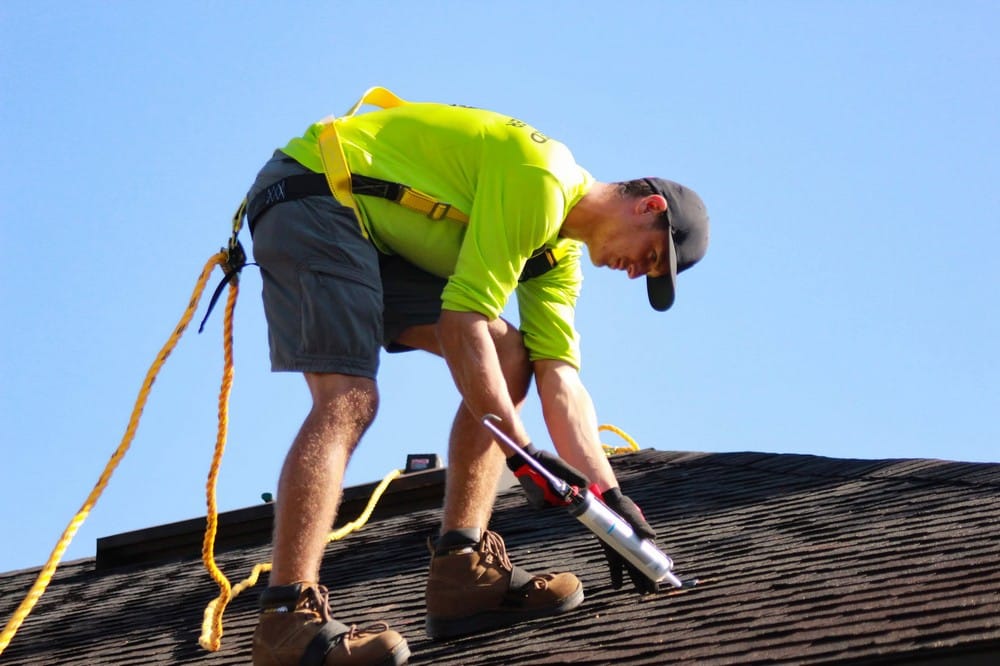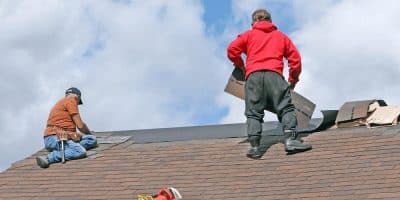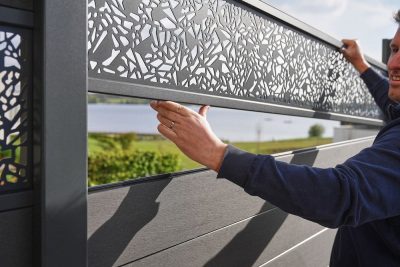After experiencing harsh weather conditions, addressing potential damage to your roof is vital. The challenges that storms and heavy winds bring can create significant, often hidden, problems for your home’s roofing system. Roof inspections following severe weather can be the difference between a minor repair and a major renovation. Here, we delve into six musts for roof inspections to ensure your home remains safe and sound.

Visual Inspection from the Ground
Begin your roof assessment by conducting a visual inspection from the safety of the ground. This initial step is crucial as it allows you to spot evident issues such as missing shingles, sagging areas, or debris piling up. Examine the condition of your roof. Stand back a safe distance from the structure and check for any irregularities or damage. This examination helps identify if you need to hire a professional contractor for a more detailed evaluation.
Never underestimate the importance of this step, as many issues can be visible without even climbing on the roof. If something seems off, like discoloration, uneven surfaces, or a buildup of moss, it may be time to connect with a trusted roofing contractor who can assess the situation in detail and recommend next steps. Catching problems early with a professional inspection often means avoiding more costly repairs down the line.
A Thorough Interior Inspection
After assessing the roof’s exterior, it’s important to examine your home’s interior for any signs of water damage or leaks. Look at the ceilings and walls directly under the roofline in every room of your house. Be on the lookout for stains, mold, or peeling paint, which can indicate a leaking roof. Areas around skylights and vents can harbor hidden problems, requiring scrutiny.
In older homes, especially during harsh weather events, insulation might have suffered. If the insulation is soaked or damaged, it could lead to heat loss and increase energy bills in addition to compromising the roof’s structural integrity. Addressing these interior issues should be a part of your storm recovery and inspection process, as it helps you address potential long-term damage before it escalates.
Inspect Flashing and Seals
Flashing and seals are vital components of your roofing system, helping to prevent water intrusion at various points, such as joints and transitions. Harsh weather can compromise these areas, and they must be inspected thoroughly after a storm. Check for cracks, gaps, or anything that looks out of the ordinary. A certified roofing company ensures that flashing is installed correctly and any damaged seals are replaced promptly. Properly maintained flashing increases the lifespan of your roof significantly.
In some cases, homeowners might consider DIY methods to patch up these areas. Faulty repairs can lead to chronic leaks and unnecessary costs. Relying on the expertise of established professionals might make a difference in ensuring complete preventive measures.
Assess the Condition of Gutters
Post-storm gutters should be inspected rigorously. These channels play a vital role in directing water away from your home’s foundation, and any damage or blockage could lead to larger issues down the road. Check for dents, sagging sections, or areas where water might not be able to flow freely. Don’t forget to clear out any built-up debris as well, as this can create flooding over time, putting more stress on your roof.
If gutters are neglected, they can create a substantial risk, especially for homes with steep roofs or those in areas prone to heavy rainfall. Clogged gutters can lead to water seeping back into the roof and attic, causing potential damage. Therefore, it’s wise to evaluate your system thoroughly, and if repairs are needed, it’s best done by reliable roofers.
Document All Findings
As you carry out these inspections, it’s crucial to document all your findings professionally. Taking photographs and notes on any damage found provides a clear overview of the issue, which can be very helpful for future reference. If you decide to seek assistance from a roofing company, having this documentation can aid them in identifying appropriate solutions.
Proper documentation will go a long way in assisting your insurance company if claims are necessary as well. Many homeowners are unaware that many policies cover damages following a severe storm. Being prepared with proof of damage can facilitate the claims process and help you receive the necessary aid for repairs swiftly. When dealing with storm damage, clarity is of utmost importance.
Schedule a Professional Inspection
Having a professional come in for a thorough inspection is the best course of action post-storm. While homeowners can perform preliminary checks, a trained eye can identify issues that may be easily overlooked. Professionals can provide a detailed report on the roof’s condition, which is beneficial for long-term maintenance and planning.
At the end of the day, whether it involves minor repairs or extensive storm damage repair, addressing roofing issues promptly is crucial in extending your roof’s lifespan. Relying on experts ensures quality work and instills confidence in your home’s protection. With qualified roofers, you can rest assured that your roof will return to its optimal condition. Taking the proactive approach outlined above ensures your home remains secure after harsh weather.

By systematically evaluating your roof through visual and interior inspections, addressing flashing and gutter maintenance, documenting findings, and most importantly, engaging qualified professionals, you can safeguard your investment and provide long-lasting protection for your home.








